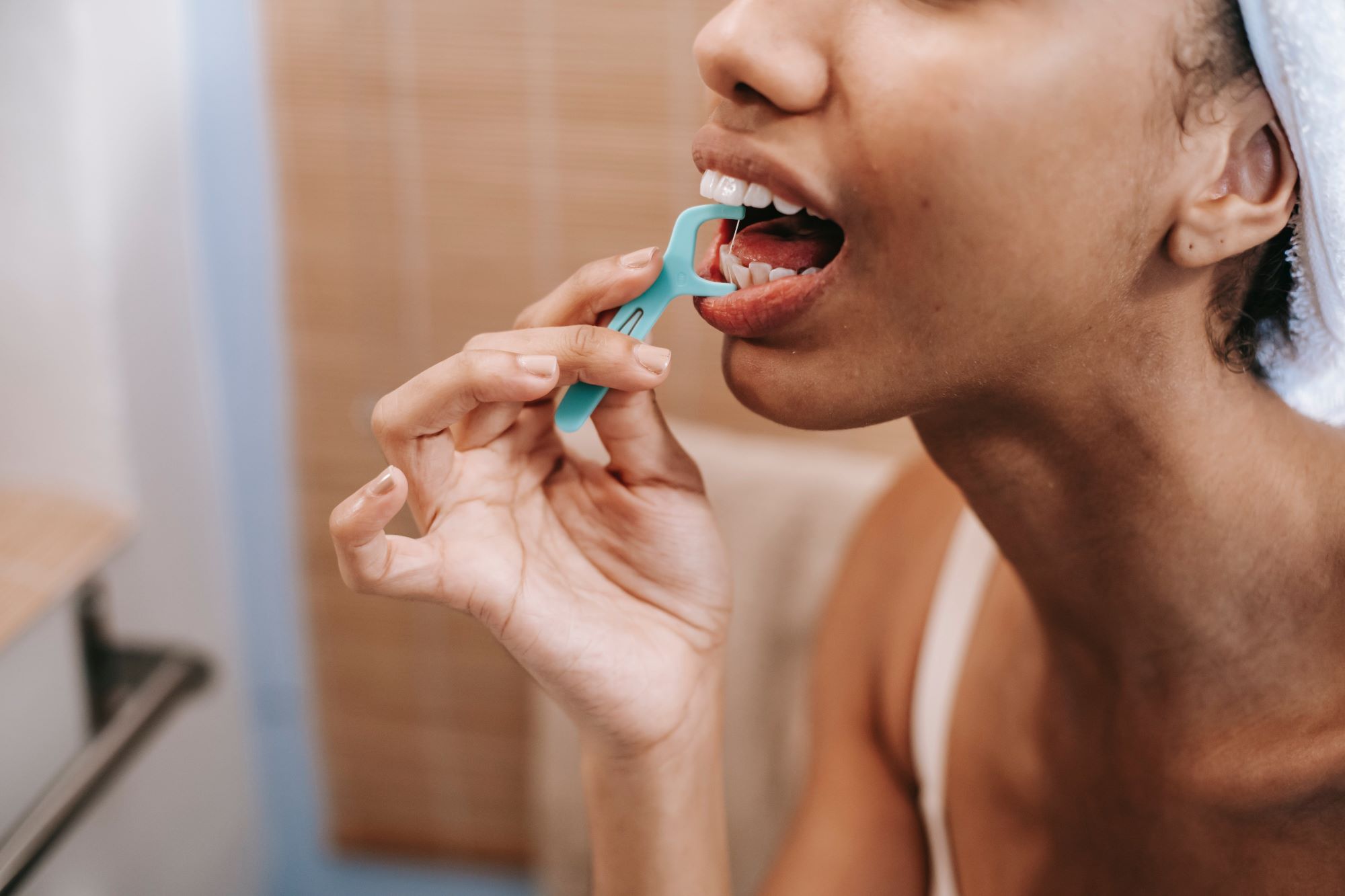
08 Feb The Patient Who Never Flossed
Ever wondered what would happen if you never flossed your teeth? Your dentist is always telling you to, but how important is it, really? If we’re honest, it’s a bit of a pain.
You’re not the only one who’s wondered. Flossing is—believe it or not—not America’s favorite pastime. Although 1/3 of Americans report to flossing daily, the other 2/3 report to flossing either occasionally or…never. And you know that uncomfortable moment when you’re lying in the dentist’s chair and they ask you whether you’ve been flossing? If you fudged the numbers a little bit, so did 44% of the country. At least, that’s the percentage that admitted to exaggerating when asked by their dentist how much they floss.
The conclusion is obvious: Americans are not fond of this basic dental hygiene habit. But unfortunately, their distaste comes at the price of their dental health.
To understand exactly why this unpopular habit is so crucial to oral hygiene, we’ll examine what would happen if you simply were to skip flossing altogether.
Stage 1: The Plaque Buildup
At first, after neglecting to flossing for a day or two, you might think that nothing had happened. Your teeth might feel just as clean as ever to you.
This would be no surprise to dentists. A large part of the reason why flossing is so unattractive to many people is that unlike brushing your teeth, which leaves you with fresh breath and a clean-feeling mouth, flossing doesn’t provide much tangible difference in the moment. It’s easy to believe you didn’t accomplish anything, other than following the dentist’s orders. As Alla Wheeler, an associate professor at the New York University School of Dentistry put it, “There is no instant gratification with flossing—that’s the problem. Patients don’t think it does anything.”
But this is far from the case. When you skip flossing, even just for a day, harmful processes are set in motion.
What is plaque and why does it buildup?
Chances are, you’ve heard the word ‘plaque’ thrown around at your dentist’s office before. But, you may not have ever heard exactly what it is. As Hilary Parker explains, “Even if you take great care of your teeth at home, you still have bacteria in your mouth. They mix with proteins and food byproducts to form a sticky film called dental plaque. This gunk coats your teeth, gets under your gum line, and sticks to fillings or other dental work. Plaque carries bacteria that can damage tooth enamel and lead to cavities.”
Not very appealing, right? Unfortunately, keeping that sticky film away is a hard-won battle. While brushing your teeth is certainly helpful in fighting plaque, it can’t win the fight by itself. Wheeler points out how, “Each tooth has five surfaces. If you don’t floss, you are leaving at least two of the surfaces unclean. Floss is the only thing that can really get into that space between the teeth and remove bacteria.” In fact, when it comes down to it, “flossing does about 40% of the work required to remove sticky bacteria, or plaque, from your teeth.”
Skipping flossing even for just a day means that day’s plaque and bits of food remain lodged in the crevices between your teeth, ready to cause trouble.
Stage 2: Tartar Sets In
The trouble is the rapid-onset type: with just 24-72 hours, plaque that has not been removed will harden into tartar, spelling more bad news for your teeth.
As Hilary Parker explains, “Tartar, also called calculus, forms below and above the gum line. It is rough and porous and can lead to receding gums and gum disease.” Furthermore, once tartar has set in, it must be removed by your dentist.
While you might not have noticed any consequences of flossing at first, the results will begin to show if you know what to look for. Tartar is known to coat the exterior of the teeth, even reaching below the gumline, and feeling like a crusty blanket on teeth. Tartar’s porous nature makes it easily stained, so you may also find your teeth looking more yellow or brown than usual. Needless to say, after a few days or weeks of not flossing, the effects will begin to sink in.
Stage 3: A Not-So-Curious Case of Gum Disease
Periodontitis—it’s the official named for gum disease, an infection that damages the soft tissue around your teeth. If left untreated, it can destroy the bone supporting your teeth, potentially causing you to even lose the teeth themselves.
As the Mayo Clinic points out, “Periodontitis is common but can usually be prevented. It’s often the result of not taking care of your mouth and teeth.” The National Institute of Dental and Craniofacial Research adds that, “It’s typically caused by poor brushing and flossing habits that allow plaque—a sticky film of bacteria—to build up on the teeth and harden.”
If flossing is continually neglected, over time, the plaque will harden into tartar, and the tartar will progress into your gum line, damaging them, and causing progressive gum disease. Likely, it will start with the mildest form: gingivitis.
Gingivitis
Common indicators of gingivitis are irritation, redness, and swelling of the gums. Thankfully, if you catch the disease in the gingivitis phase, it can usually be reversed. It is recommended that you brush, floss, use an antiseptic mouthwash, and get regular cleanings from your dentist to correct gingivitis.
Unfortunately, there are stages of gum disease much worse than gingivitis. When gingivitis progresses, that is when it officially becomes called periodontitis.
Periodontitis
In this stage, “…pockets form between the gums and teeth and get infected by the bacteria… Your immune system sends chemicals to fight back and they mix with bacteria and tissues that hold your teeth in place. The resulting stew can damage the bones and tissues that hold your teeth in place.”
Gum disease is a painful, unpleasant condition, but it doesn’t just manifest itself in physical discomfort. It’s been said that gum disease can even damage youthful looks. Lisa Zamosky notes that gum disease, “…attacks the bones that support your teeth and the lower third of your face. People who preserve the height of that bone by flossing look better as they age.”
Physical discomfort. Loss of youthful looks. And in the most severe cases, the loss of the teeth themselves—gum disease is not to be taken lightly. And the driving cause? A neglect for proper brushing and flossing of teeth.
Floss to the Rescue
Good thing that was only a hypothetical! Neglecting to floss your teeth truly does take a significant toll on your dental health. While it may seem like it doesn’t matter in the moment, one thing will lead to another. Unless you floss, plaque will remain hidden away in crevices. Here it will quickly harden into unforgiving tartar that only the dentist can remove. If the situation is left unchecked, eventually you could develop gum disease. Thankfully, by staying in the habit of flossing once a day as the ADA recommends, you can take a serious step in preventing all of this from happening. Next time your dentist asks you if you’ve been flossing, you’ll be able to give him a good report.

About Our Team
Our team at Bloomingdale Dentistry has over 40 years of experience in the field of dentistry. We have a reputation of excellence in patient treatment and care.
To learn more about our team, visit our team page.
